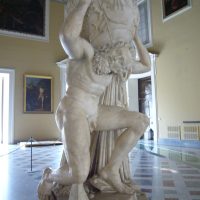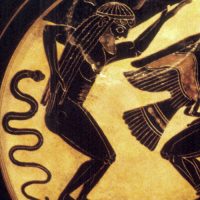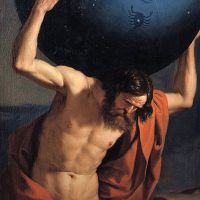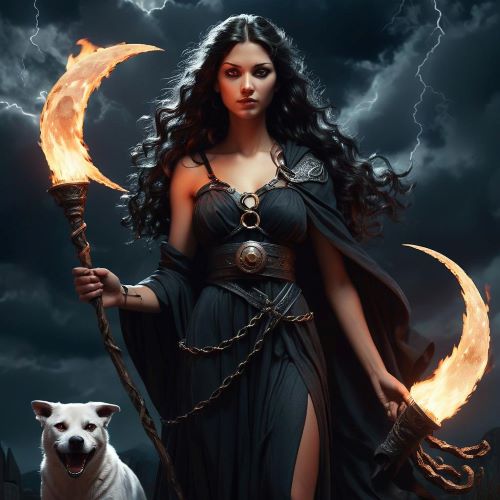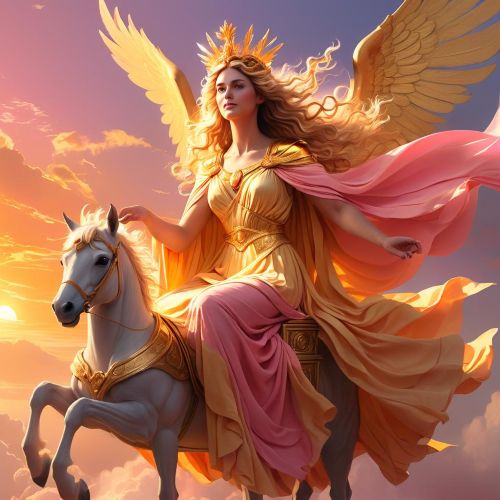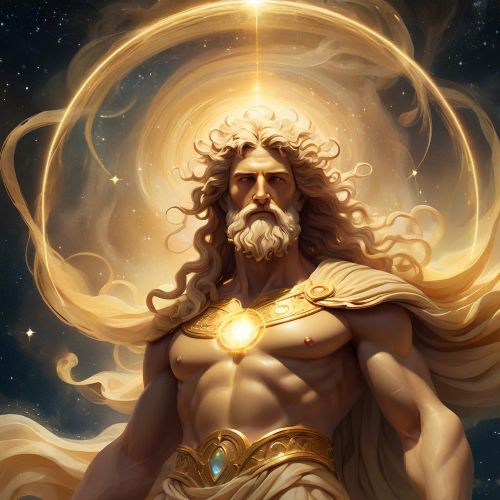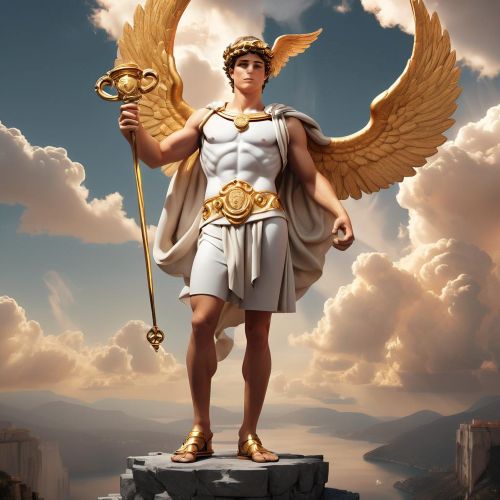Atlas : Bearer of the Sky
Listen
At a glance
| Description | |
|---|---|
| Origin | Greek Mythology |
| Classification | Gods |
| Family Members | Iapetus (Father), Clymene (Mother), Prometheus, Epimetheus, and Menoetius (Siblings) |
| Region | Greece |
| Associated With | Strength |
Atlas
Introduction
Atlas is one of the most iconic figures in Greek mythology, remembered for his eternal punishment of bearing the weight of the heavens on his shoulders. A second-generation Titan, Atlas stood against the Olympian gods during the Titanomachy, the great war between Titans and Olympians. When Zeus and his allies emerged victorious, Atlas received one of the harshest punishments: to forever hold up the sky, preventing it from collapsing upon the earth. This enduring image of strength, endurance, and burden has shaped not only mythological tradition but also language, art, and culture for centuries. Even today, the figure of Atlas resonates in modern geography, literature, and philosophy, making him one of the most influential mythological beings of all time.
Physical Traits
Atlas is almost universally depicted as a colossal figure of unmatched strength. In classical Greek art and sculpture, he is shown as a heavily muscled man, his sinewy arms and broad shoulders straining under the immense celestial sphere. His posture often suggests the unending effort required to sustain the heavens—sometimes kneeling with his back arched, at other times standing tall but bowed under the burden. Unlike many gods who carry divine symbols or weapons, Atlas is marked only by his raw physical power, emphasizing the suffering tied to his punishment. Ancient poets, including Ovid in the Metamorphoses, even describe Atlas’s transformation into a mountain, with his body forming ridges, forests, and peaks—an image often connected to the Atlas Mountains in North Africa. His physical identity is thus inseparable from both endurance and the natural world.
Family
Born of the Titan Iapetus and the Oceanid Clymene (or Asia in some versions), Atlas belonged to a powerful family that frequently clashed with the Olympians. His brothers were Prometheus, who defied Zeus by giving fire to mankind; Epimetheus, who married Pandora; and Menoetius, punished for his violent temper. Together, this lineage represents themes of defiance, human suffering, and cosmic punishment within Greek mythology.
Atlas himself fathered several significant mythological figures. With the Oceanid Pleione, he fathered the Pleiades, seven sisters who were transformed into stars. With Hesperis, he fathered the Hesperides, guardians of the golden apples in the garden at the edge of the world. He was also associated with the Hyades, star nymphs who brought rain, and with Calypso, the nymph who detained Odysseus on her island. Through his children, Atlas’s legacy became intertwined with the heavens, constellations, and natural cycles of weather and fertility.
Other names
Atlas was often given epithets that highlighted his role as the bearer of the heavens. The most common was Atlas Telamon, which translates to “enduring Atlas,” underscoring the strength and suffering associated with his punishment. His name itself is thought to come from the Greek verb tlaō, meaning “to endure” or “to suffer,” perfectly matching his mythological role. In some traditions, he was also called Atlas Iapetionides, identifying him as the son of Iapetus. Roman writers preserved his name unchanged, though his image became strongly associated with astronomy and map-making, paving the way for the modern use of “atlas” in cartography.
Powers and Abilities
Atlas was not a god in the Olympian sense, but as a Titan he possessed extraordinary strength and stamina. His defining power was his capacity to hold apart Uranus (the sky) and Gaia (the earth), preserving the balance of the cosmos. This role was both punishment and necessity: without Atlas, the heavens and earth might collapse into chaos.
Beyond brute force, Atlas was linked with knowledge of astronomy and celestial navigation. His children’s transformation into stars reinforced this association, and ancient sailors invoked his name for guidance across seas. Atlas also appeared in several myths involving famous heroes. In the Labors of Heracles, the strongman persuaded Atlas to fetch the golden apples from the Hesperides, briefly transferring his cosmic burden to Heracles. In another tale, Perseus used Medusa’s severed head to turn Atlas into stone, creating the mountain range that still bears his name. These myths highlight his dual role as both helper and obstacle in heroic quests, reinforcing his stature as a powerful but tragic figure.
Modern Day Influence
In cartography and geography, the word “atlas” became synonymous with collections of maps after the 16th-century cartographer Gerardus Mercator used Atlas’s image on the cover of his famous work. The Titan thus came to symbolize the human quest for knowledge of the world and heavens. The Atlas Mountains in Morocco further preserve his memory in physical geography.
In art and literature, Atlas’s straining form has appeared across centuries, from the Farnese Atlas, a Roman statue depicting him holding the celestial sphere, to Renaissance and modern interpretations emphasizing his burden as a metaphor for human endurance. Philosophers and authors have also drawn from his myth. Perhaps most famously, Ayn Rand’s novel Atlas Shrugged uses his name as a metaphor for individuals carrying the weight of society’s expectations.
In popular culture, Atlas appears in films, video games, and comics as a figure of immense strength or tragic fate. His image is also used in branding, especially in industries emphasizing endurance, travel, and physical power, from fitness centers to global companies.
In psychology and language, Atlas’s punishment gave rise to the phrase “carrying the weight of the world on one’s shoulders.” This idiom remains a powerful way to describe overwhelming responsibility or emotional burden. Some psychological frameworks even reference an “Atlas personality,” describing individuals who feel compelled to shoulder the problems of others, much like the Titan himself.
Related Images
Source
Centre of Excellence. (2023). Atlas in Greek mythology: Myths, powers, and symbols. Retrieved from https://www.centreofexcellence.com/atlas-in-greek-mythology/
Watt, K. (2024). Atlas and the influence of Greek mythology on modern culture. Greek Mythology Worldwide. Retrieved from https://greek.mythologyworldwide.com/atlas-and-the-influence-of-greek-mythology-on-modern-culture/
Brown, J. (2023). Greek God Atlas – The Titan bearing the weight of the heavens. Learning History. Retrieved from https://learning-history.com/greek-god-atlas/
Hard, R. (2004). The Routledge Handbook of Greek Mythology. Routledge.
Morford, M., Lenardon, R., & Sham, M. (2018). Classical Mythology (11th ed.). Oxford University Press.
Graves, R. (2011). The Greek Myths: Complete Edition. Penguin Books.
Hesiod. (2006). Theogony and Works and Days (M. L. West, Trans.). Oxford University Press.
Evangelia. (2023). Atlas | Mighty Titan in Greek Myth With an Eternal Burden – Olympioi. https://olympioi.com/greek-gods/atlas
Contributors to Wikimedia projects. (n.d.). Atlas (mythology) – Wikipedia. https://en.wikipedia.org/wiki/Atlas_(mythology)
Atlas | Titan, Mount Olympus & Constellations | Britannica. (2025). https://www.britannica.com/topic/Atlas-Greek-mythology
Frequently Asked Questions
What is lorem Ipsum?
I am text block. Click edit button to change this text. Lorem ipsum dolor sit amet, consectetur adipiscing elit. Ut elit tellus, luctus nec ullamcorper mattis, pulvinar dapibus leo.
What is lorem Ipsum?
I am text block. Click edit button to change this text. Lorem ipsum dolor sit amet, consectetur adipiscing elit. Ut elit tellus, luctus nec ullamcorper mattis, pulvinar dapibus leo.
What is lorem Ipsum?
I am text block. Click edit button to change this text. Lorem ipsum dolor sit amet, consectetur adipiscing elit. Ut elit tellus, luctus nec ullamcorper mattis, pulvinar dapibus leo.
What is lorem Ipsum?
I am text block. Click edit button to change this text. Lorem ipsum dolor sit amet, consectetur adipiscing elit. Ut elit tellus, luctus nec ullamcorper mattis, pulvinar dapibus leo.
What is lorem Ipsum?
I am text block. Click edit button to change this text. Lorem ipsum dolor sit amet, consectetur adipiscing elit. Ut elit tellus, luctus nec ullamcorper mattis, pulvinar dapibus leo.



